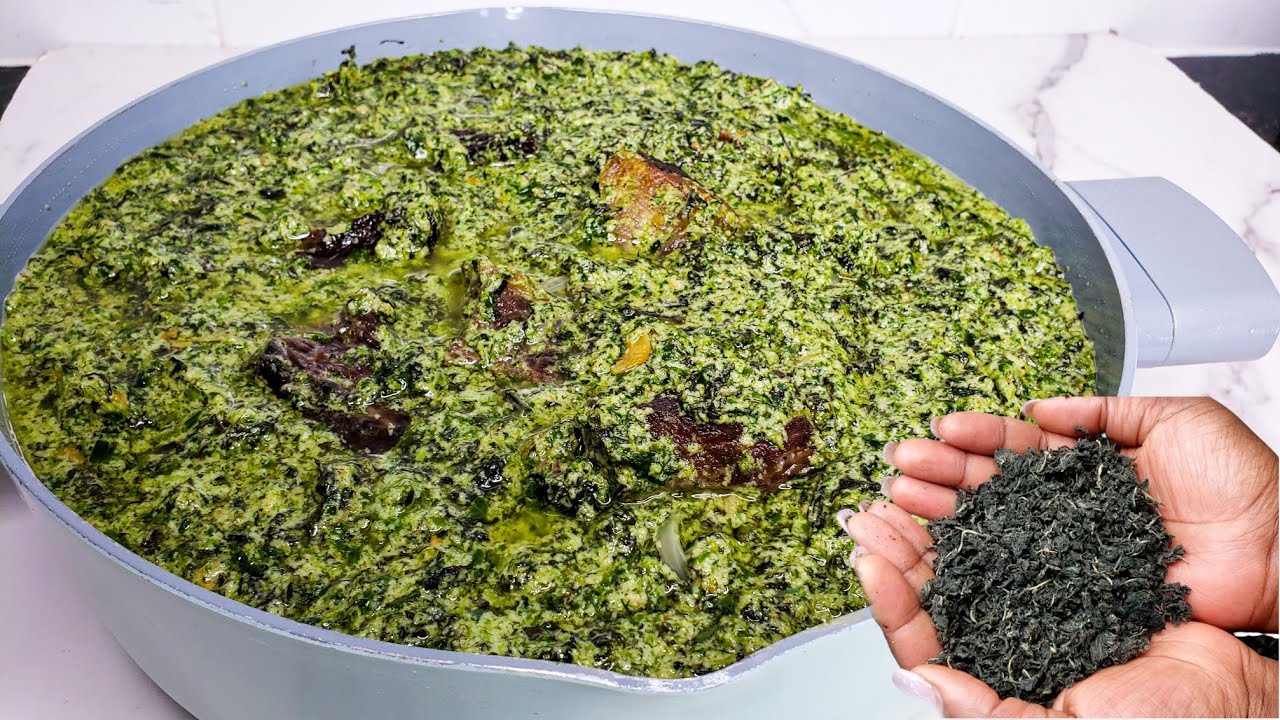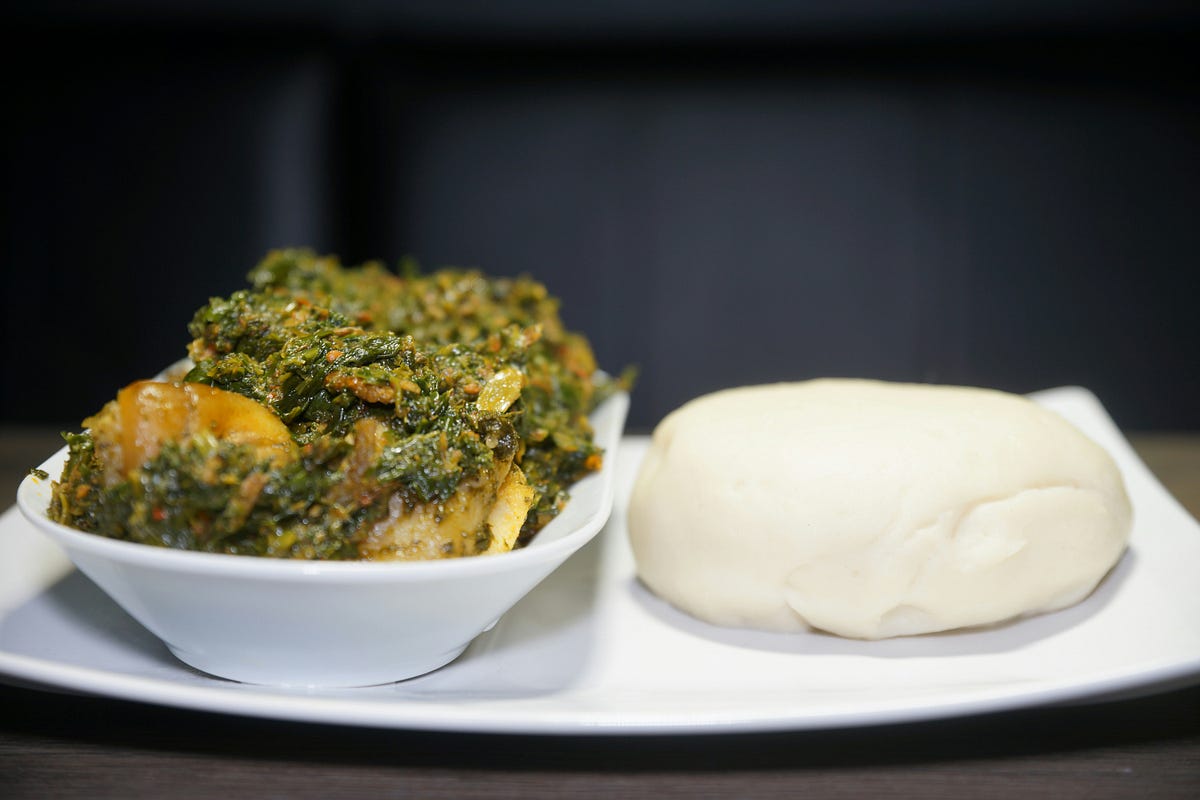How to Make Ndolé: The Authentic Cameroonian Bitterleaf Stew Recipe

Ndolé is more than just a meal—it’s a vibrant expression of Cameroonian heritage and one of the country’s most celebrated dishes. Known as the “national dish” of Cameroon, this classic bitterleaf stew is a delightful mix of earthy bitterleaf greens, rich peanut paste, and savory meat (or fish), simmered to perfection with local spices. In this detailed guide, you’ll learn how to make Ndolé from scratch, along with insider tips, variations, and serving suggestions that will help you bring a taste of Cameroon right into your kitchen.
Table of Contents
- What is Ndolé?
- History and Cultural Significance
- Ingredients You’ll Need
- Step-by-Step Preparation
- Cooking Tips and Variations
- How to Serve Ndolé
- FAQs on Ndolé
- Conclusion
What is Ndolé?
Ndolé is a hearty, savory stew that combines the bitter notes of traditional bitterleaf (locally known as ndolé or bitterleaf greens) with the rich creaminess of ground peanuts. Traditionally prepared with meat such as beef, pork, or even shrimp, Ndolé offers a wonderful balance of flavors that is both robust and satisfying. This dish is not only popular in home kitchens but is also a staple at festive gatherings and celebrations across Cameroon.
History and Cultural Significance
Ndolé holds a special place in Cameroonian cuisine. Its origins are deeply rooted in the country’s cultural diversity and agricultural bounty. The use of bitterleaf, for example, is a hallmark of many West African recipes—its natural bitterness is balanced by the sweetness of the peanut paste and the savory depth of meat or fish. Over generations, Ndolé has evolved into a dish that reflects the communal spirit of Cameroon, where recipes are passed down through families and adapted to incorporate local ingredients and tastes.
Its widespread appeal has earned Ndolé a reputation as a symbol of national pride, making it a must-try dish for anyone interested in experiencing authentic Cameroonian flavor.
Ingredients You’ll Need
For a classic Ndolé recipe serving 6–8 people, gather the following ingredients:
Main Ingredients
- Bitterleaf (Ndolé leaves): 1–1.5 kg, thoroughly washed and chopped
- Meat: 1–1.5 kg beef (or your choice of pork, chicken, or shrimp), cut into cubes
- Peanuts: 500 g raw peanuts (or use natural peanut butter without added sugar/salt)
Aromatics and Spices
- Onions: 2 large, finely chopped
- Garlic: 4–6 cloves, minced
- Crayfish: 2–3 tablespoons (ground or powdered)
- Fresh Scotch bonnet or red chili peppers: 1–2 (optional for heat)
- Salt and pepper: To taste
- Bouillon cubes: 1–2 (optional for extra depth of flavor)
Fats and Liquids
- Palm oil or vegetable oil: 4–6 tablespoons
- Water or meat broth: 3–4 cups (adjust as needed)
Optional Ingredients
- Smoked fish: 300 g, flaked (can be added for extra flavor)
- Vegetable medley: A handful of spinach or waterleaf (for additional texture and nutrition)
Step-by-Step Preparation
1. Preparing the Bitterleaf
- Clean Thoroughly: Bitterleaf is naturally bitter, so it must be well-washed. Rinse the leaves multiple times in cold water. Some cooks like to soak the leaves for 30 minutes to further reduce the bitterness.
- Chop and Set Aside: After washing, roughly chop the leaves. If you prefer a smoother texture in your stew, you can blend a portion of the leaves into a puree.
2. Preparing the Meat
- Seasoning: In a large bowl, season your meat with salt, pepper, and any preferred spices. Allow it to marinate for at least 30 minutes.
- Browning: In a heavy-bottomed pot or Dutch oven, heat the palm oil over medium-high heat. Brown the meat in batches so that it develops a rich color and flavor. Remove and set aside.
3. Making the Peanut Paste
- Roast the Peanuts: Lightly roast the raw peanuts in a dry pan for 5–7 minutes until they turn golden. Allow them to cool.
- Grind: Use a food processor or mortar and pestle to grind the peanuts into a coarse paste. If you’re using natural peanut butter, ensure it’s unsweetened and unsalted.
4. Sautéing the Aromatics
- Onions and Garlic: In the same pot, add the chopped onions and garlic. Sauté for about 5 minutes until translucent and fragrant.
- Spices: Add ground crayfish and chopped chili peppers (if using) and stir for another 2 minutes.
5. Combining the Ingredients
- Reintroduce the Meat: Return the browned meat to the pot.
- Add Liquids: Pour in the water or broth, scraping the bottom of the pot to release any flavorful browned bits.
- Simmer: Bring the mixture to a simmer and cover the pot. Let it cook for 30–45 minutes until the meat is tender.
6. Incorporating Bitterleaf and Peanut Paste
- Mix the Peanut Paste: Stir in the prepared peanut paste, ensuring it blends well with the broth.
- Add Bitterleaf: Gradually add the washed bitterleaf to the pot. Mix well so that the leaves and meat combine with the peanut sauce.
- Final Simmer: Allow the stew to simmer uncovered for an additional 20–30 minutes. This helps the flavors meld and the bitterness of the leaves to mellow out.
7. Adjust Seasonings and Serve
- Taste and Adjust: Check the seasoning and add more salt, pepper, or bouillon cubes if needed.
- Optional Additions: If you’re adding smoked fish or extra greens, stir them in during the final 10 minutes of cooking.
- Serve Hot: Ndolé is best enjoyed hot. It is traditionally served with fufu, plantains, or boiled yams, which help soak up the rich, flavorful sauce.
Cooking Tips and Variations
Tips for Perfect Ndolé
- Balancing Bitterness: The key to a great Ndolé is achieving the right balance between the natural bitterness of the leaves and the creamy, nutty flavor of the peanut paste. Soaking the bitterleaf and careful seasoning are essential.
- Slow Simmering: Allow the stew to simmer slowly so that the flavors develop fully. Rushing the process can lead to underdeveloped taste.
- Consistency: If you prefer a thicker stew, let it simmer longer uncovered. For a thinner consistency, add more broth.
Variations to Try
- Seafood Ndolé: Replace or supplement the meat with smoked fish or shrimp for a different twist.
- Vegetarian Ndolé: Omit meat entirely and use a medley of mushrooms and extra greens. Boost the protein content by adding tofu or tempeh.
- Spicy Ndolé: Increase the amount of fresh chili peppers or add a dash of cayenne pepper if you enjoy extra heat.
How to Serve Ndolé
Ndolé is best served as a communal dish. Here are some popular serving suggestions:
- With Fufu: Traditional pounded starchy sides such as cassava, yam, or plantain fufu are ideal for dipping into the stew.
- With Boiled Plantains or Yams: These starchy sides complement the rich flavors of Ndolé.
- With Rice: For a more contemporary presentation, serve Ndolé over steamed white rice or even with a side of jollof rice.
Garnish with a sprinkle of chopped fresh herbs like parsley or basil to add a burst of color and freshness.
FAQs on Ndolé
Q1: What makes bitterleaf unique in Ndolé?
A1: Bitterleaf provides a distinct earthy and slightly bitter flavor that contrasts beautifully with the creamy, rich peanut paste and savory meat, making it a signature element of Ndolé.
Q2: Can I make Ndolé without meat?
A2: Yes! You can create a delicious vegetarian version by using a variety of mushrooms, extra greens, and even tofu. The traditional flavors remain intact when you adjust the spices and seasoning.
Q3: How do I reduce the bitterness of the leaves?
A3: Washing the leaves thoroughly, soaking them in water, or even blanching them briefly before adding to the stew can help reduce the bitterness.
Q4: What side dish pairs best with Ndolé?
A4: Ndolé is traditionally paired with fufu—a starchy, dough-like side made from pounded cassava, yams, or plantains—but it also goes well with boiled plantains, yams, or even rice.
Conclusion
Ndolé is a celebrated emblem of Cameroonian cuisine—a hearty, flavorful stew that brings together the bitter, the nutty, and the savory in perfect harmony. Whether you’re preparing it for a family dinner or a special celebration, mastering this dish is a wonderful way to explore and share the rich culinary traditions of Cameroon.
By following our detailed recipe and tips, you’ll be able to recreate this authentic dish from scratch, ensuring every bite carries the genuine taste of Cameroon. Enjoy your culinary journey, and don’t forget to share your Ndolé creation with friends and family!






